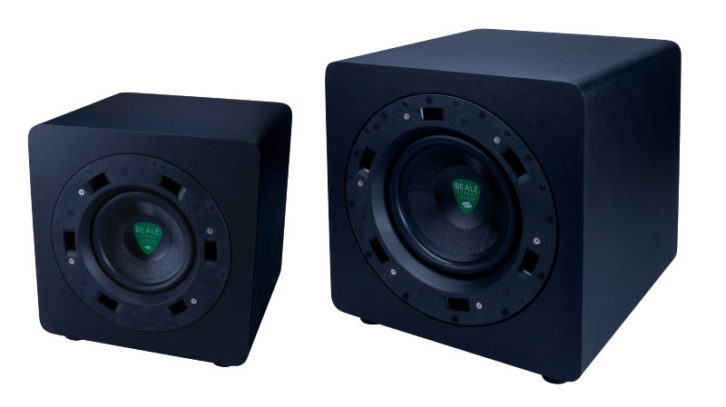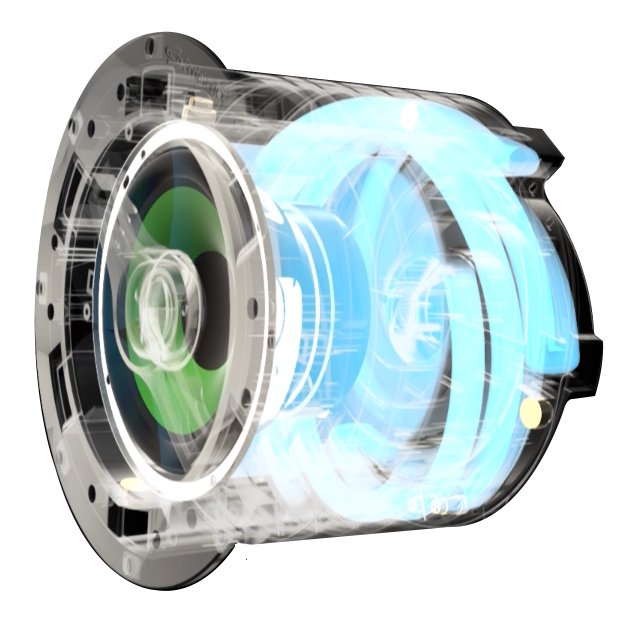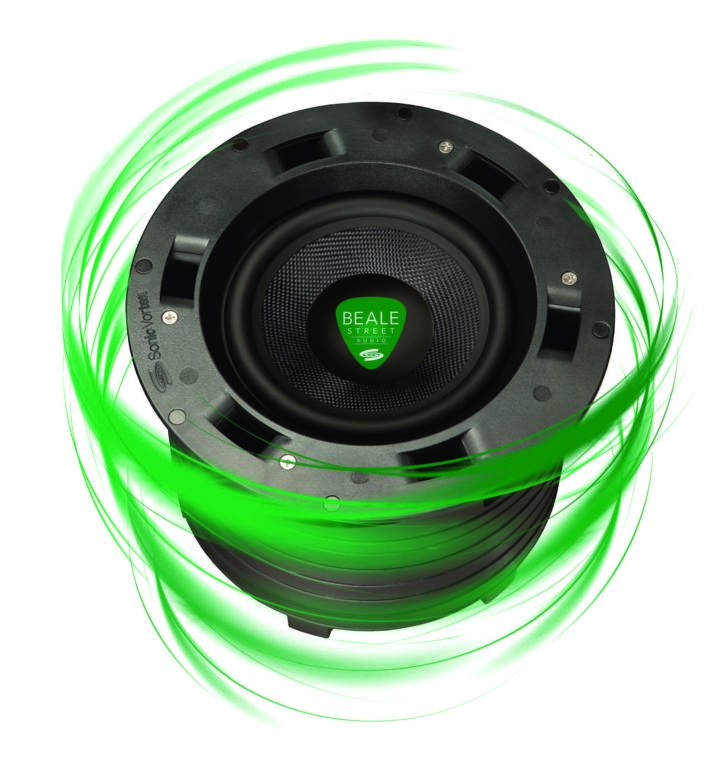
When installing a home theater, the types of speakers and video gear tend to be what the customer focuses their attention on, but often times the subwoofers are a little bit of an afterthought. To many consumers, subs are just big black boxes that take up precious floor space and don’t exactly align with their room’s décor. However, bass plays a major role in the overall home theater experience and it’s the integrator’s job to educate their customers on why it matters. My advice to integrators with resistant customers is to sit them down for a demo. If you have solid and impactful demo material that highlights the low notes, that’s all it takes to get those cynical customers on board.
Leveraging Technology to Optimize the Sound
Ports are a staple in subwoofer technology because of their ability to increase bass. High-end subwoofer engineers have used ports for years to maximize bass quality, but, due to the laws of physics, they often require a lot of real estate in order to produce desired sound quality. (For example, the smaller the subwoofer cabinet the longer the port needs to be, and the bigger the subwoofer the shorter but wider the port should be.) This means that subwoofer cabinets are often quite large, which also means they can be more challenging for integrators to install in tight spaces (not to mention more likely to deter those resistant customers I mentioned earlier).
Beale Street Audio’s patented Sonic Vortex technology uses a unique port design that allows for long ports without increasing the cabinet size. “Come again?” you say. Hear me out…

We are able to achieve the integration of long ports into small subwoofer enclosures by coiling them within the cabinet — because nobody said the ports have to be straight to achieve good bass! In each of our new Beale Street Audio BPS-65 (6.5-inch) and BPS-80 (8-inch) in-room subwoofers there are six of these “coiled” ports. The results? Consistent and efficient deep bass in a smaller and much easier to install form factor.

For dedicated home theaters, I recommend having a minimum of two properly placed subwoofers to achieve optimally balanced sound, but the number of subwoofers used in an installation often depends on a combination of what is needed, what is wanted, and what the budget is. This balancing act is what makes the new Beale Street Audio BPS-65 and BPS-80 models such solid subwoofer solutions for residential integrators. Their compact size, stellar acoustics, and overall cost-effectiveness help integrators check all the boxes for their customers without having to make any sacrifices.

Prepare for the Installation
Once you’ve converted your customers and you’ve selected the right AV equipment for their space and budget, it’s time for the install. When installing a home theater, it is essential to consider not only which subwoofer(s) to install, but also the size and number of subs the room requires to optimize the impact of those low notes. To develop an accurate soundstage in a theater room, I normally place the front left, center, and right loudspeaker channels in relation to the seating or listening area, followed by the surrounds and/or rears, and lastly the subwoofer(s) — which in my opinion is the most critical element of the installation.
Subwoofer Positioning
Subwoofer placement plays a huge role in creating an immersive home theater experience for your customers, and it can be a tricky game because oftentimes the aesthetics of the room may conflict with functionality and sound quality. For this reason, it’s not uncommon to see a sub hidden in the corner of a room. I have been on job sites where subs are hidden away behind objects like chairs, plants, and end tables. It’s obvious that in those cases interior design trumped functionality. However, I would never recommend blocking the woofer face or port in any circumstance. Though the sub may still technically “work” tucked away, you just don’t get that tight, impactful, and full bass that the customer deserves. Taking the time to place the subwoofer(s) correctly can be the difference of a good system to a truly great system.
The truth is though, subwoofer placement can vary greatly depending on the room and listening environment. A popular subwoofer placement technique in our industry is casually referred to as the “sub crawl.” The sub crawl is when you place the subwoofer at a central or primary seating position with the port and speaker facing the front of a system. Then, play whatever audio content helps you easily detect the low notes and start out in one corner of the room or listening area, and walk around to the opposite corner. This helps you identify the dead spots within the room (and thus helps you determine the ideal, and not so ideal location for placing the sub.)
Another easy way to get relatively balanced sound in a home theater is by utilizing the calibration features and functionality built into the system’s electronics (for example, within the amplifier, AVR, etc.). Level calibration is a critical feature to play with, as different makes and models of speakers — as well as the size, position, and distance of speakers from one another — will attribute to differing sound straight out of the box. Adjusting the system to meet the needs and acoustic challenges of a specific room will help the installer get closer to that “truly great system” I mentioned earlier. From there, more advanced tweaking can be made to fine tune the system to meet the end user’s listening preferences.
If you incorporate these subwoofer tips into your residential projects going forward, I can assure you that you will be able to maximize the system’s capabilities while leaving your clients mesmerized by the immersive, lifelike, home theater experience that you custom built for them.







